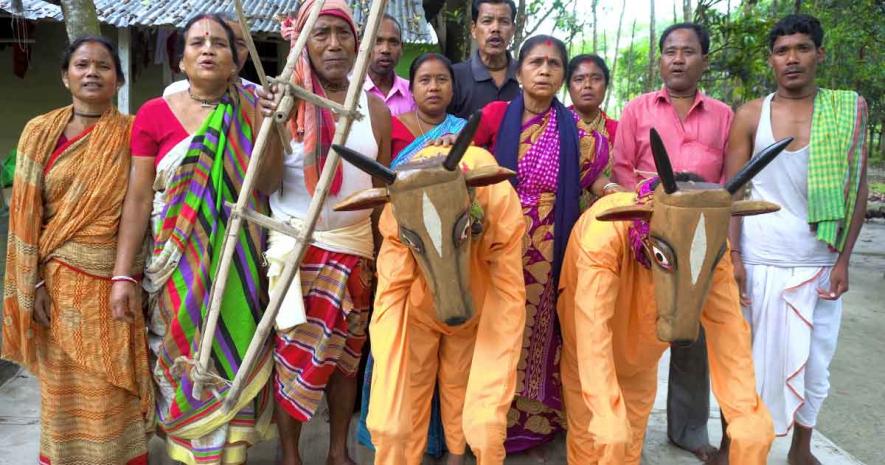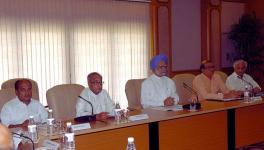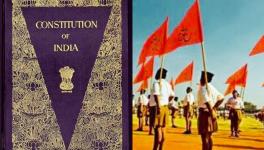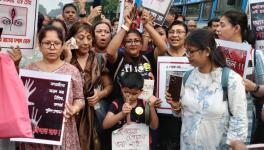Bengal Elections: Why TMC, BJP Are Pulling Out All Stops to Win Over Rajbanshis

Representational Image
Kolkata: Generally speaking, it is peace time in the Rajbanshi-inhabited areas of West Bengal; to be precise North Bengal and there is genuine expectation in the administration that these areas won’t pose a challenge to the election and law and order authorities.
The prevailing situation contrasts with that before the 2016 Assembly elections, when agitations – begun earlier by sections of statehood protagonists and separatists, and the Bharatiya Janata Party’s bid for a toehold in the state allegedly by aligning with forces suspect in the eyes of the ruling Trinamool Congress and the opposition parties, had warranted extra watch by the election personnel and law and order authorities.
The agitation issues had influenced the narrative, and demands for sops by the electorate had not come to the fore at the time of the 2016 Assembly elections. Several of the electorate’s long pending demands have been fulfilled in the prevailing generally peaceful situation. This is largely the result of statehood supporters and separatist elements in the Rajbanshi-dominated areas as also the hill areas “not pursuing their agenda under the compulsions of circumstances”.
This month has seen Amit Shah of BJP and Mamata Banerjee of Trinamool Congress (TMC) virtually engage in a competition to offer sops to the Rajbanshis.
They directly matter in 27 of North Bengal’s 54 Assembly segments. Indirectly, they are a factor in another dozen-plus constituencies. The stakes are high for the TMC supremo as four Lok Sabha constituencies – Cooch Behar, Alipurduar, Jalpaiguri and Raiganj – with large Rajbanshi population were bagged by the BJP in 2019. The Darjeeling Lok Sabha constituency, though a predominantly hill area seat, has remained under the BJP’s control since 2009 as the Gorkha Janmukti Morcha has been partnering with the BJP.
In the run-up to the Assembly elections, both the TMC and the BJP are, therefore, pulling out all stops to mobilise support of the Rajbanshis. They are also well aware that election time is ideal to press for more attention from the powers-that-be, whether at state secretariat Nabanna or at the blocs and bhavans of New Delhi.
The key initiatives of Nabanna are: To mark the birth anniversary on February 14 of the community’s most revered social reformer Panchanan Barma, a 13-acre plot was handed over on that day to Cooch Behar Panchanan Barma University for construction of a second campus at Khalishamari – the icon’s birthplace – in the Mathabhanga sub-division of Cooch Behar district. The next day, Chief Minister Mamata Banerjee virtually laid the foundation stone for the second campus at Khalishamari and also unveiled a bronze statue of the icon on the varsity’s main campus.
Also read: WB Polls: Parties Vie for Matua Votes with Doles, Citizenship Issue Looms
Nabanna has announced formation in Bengal Police of a Narayani battalion, which has been named after the royal troops of the erstwhile princely state of Cooch Behar. The battalion is to be headquartered at the district town of Mekhliganj.
Presenting the vote-on-account for 2021-22, the CM announced that 200 Rajbanshi-medium schools will be recognised and schools teaching in Kamtapuri – a variant of the Rajbanshi language – will be opened in areas with a dominant community presence.
The state is to offer jobs to over 500 former militants and linkmen of the Kamtapur Liberation Organisation (KLO). Also, the demand raised by Nasya Sheikhs, who call themselves Rajbanshi Muslims, for a development board is to be examined.
The state government’s earlier initiatives include the setting up of Rajbanshi Development and Cultural Board in 2017 and Rajbanshi Bhasa Academy in 2012.
After it became clear by early January that the BJP’s top three leaders – Narendra Modi, Amit Shah and Jagat Prakash Nadda – will visit West Bengal at short intervals, Mamata Banerjee– TMC’s lone campaigner – has been following what may be termed as back-to-back meetings and announcements. The Rajbanshi community-related announcements are no exception.
On February 11, the Union Home Minister addressed a public meeting in Cooch Behar and fulfilled other public-connect programmes. The key announcement he made that day was about New Delhi’s decision to raise a Narayani battalion in the central paramilitary forces (CPMF) and set up a training centre for such forces. The training centre is to be named after Chilarai (also known as Sukladhwaj), the younger brother of King Naranarayan. Chilarai was known to be the fiercest fighter of the Cooch Behar royal family.
Shah’s other announcements included installation of a statue of Panchanan Barma and setting up of a Rajbanshi cultural centre. The projects are estimated to cost Rs 250 crore and Rs 500 crore, respectively. The Centre’s overtures to the Rajbanshis concluded with a three-day cultural festival from February 14, which was held under the aegis of the Union Ministry of Tourism and Culture.
Also read: Struggle of Dalits and Adivasis in Bengal
Standing out in the packages of Mamata Bannerjee and Shah are the two job-generating battalions for the Bhumiputras. Lok Sabha member from Cooch Behar Nisith Pramanik believes Shah’s offers will undoubtedly appeal to the sentiment of the Rajbanshi community and boost the morale of the BJP cadres who, he is convinced, will work harder than in 2019 to ensure the victory of the BJP candidates in the forthcoming Assembly elections, the schedule for which will be made known by the Election Commission soon.
“Shah’s package has already gone down well with the electorate,” Pramanik told NewsClick. The BJP has assigned him campaign responsibility also in lower (western) Assam, where sizeable numbers of Rajbanshis live. “I have already addressed meetings in Dhubri and my next destination is Kokrajhar,” he said.
Political observers do concede that the overwhelming view at the moment is that it will be a battle between the BJP and the TMC. But, in their reckoning, the Left Front-Congress tie-up, which is better stitched this time round, may also be expected to put up a fight. And if the alliance with the Indian Secular Front of Furfura Sharif cleric Abbas Siddiqui clicks and there are no “friendly fights”, the platform should count, the observers opined.
Who Are Rajbanshis?
Koch Rajbanshis are a tribal community, who originally hailed from the ancient Koch kingdom. The word Rajbanshi literally means royal community whose homelands include the northern part of West Bengal, Assam, Arunachal, Meghalaya and other areas of the North-East. The members of this tribe hailed from what was once called Kamtapur. According to the website of the North Bengal Development Department of the state government, the Rajbanshis have a rich cultural heritage and they have their own language. The language is spoken by over one crore people in India. Bangladesh and Nepal, too, have people speaking this language.
The main distinguishable dialects are western, central, eastern and hill Rajbanshi. The last one is also known as the Koch language. The central dialect has majority of speakers and is quite uniform. There are publications in this language. The western dialect has more diversity. Lexical similarity is 77-89% in the three dialects. But the one spoken in the hills has some influence of the local tribal languages. Koch Rajbanshi Sahitya Sabha has tried to establish a unique identity of the Rajbanshi language.
The royal history dates back to the 13th century during which period, after the fall of the Pala dynasty, the Kamta kingdom took shape. The Koch Rajbanshis called themselves Kamateshwars – the rulers of Kamata / Kamatapur kingdom. The Koch dynasty flourished under the leadership of Maharaja Naranarayan and his brother, Shukladhwaj Singha – also famous as Chilarai – who was one of the greatest heroes of the time. The royal family of Cooch Behar, wherefrom Maharani Gayatri Devi hailed, were ethnically Koch Rajbanshis.
They were primarily animist, but later on they began following Hinduism / Sanatana (both Shaivite and Vaishnavite). Some sections were also found to be followers of Christianity, both Roman Catholic and Protestant.
A good number of political and non-political organisations have been formed over the years by the members of this community. The prominent ones include Kamtapur People’s Party, Greater Cooch Behar Demanding Committee, All Koch Rajbanshi Students’ Union and Koch Rajbanshi Sanmilani. KLO is the militant outfit of the community, which demanded an independent Kamtapur state “to bring back its glory”.
Cooch Behar town and the district as a whole have remained the key centres of the political and non-political activity of the community. Cooch Behar was the name of a princely state that acceded to India after Independence and was absorbed into West Bengal as Cooch Behar district. The Koch Rajbanshis are officially recognised as Scheduled Caste in West Bengal.
The writer is an independent journalist based in Kolkata.
Get the latest reports & analysis with people's perspective on Protests, movements & deep analytical videos, discussions of the current affairs in your Telegram app. Subscribe to NewsClick's Telegram channel & get Real-Time updates on stories, as they get published on our website.
























